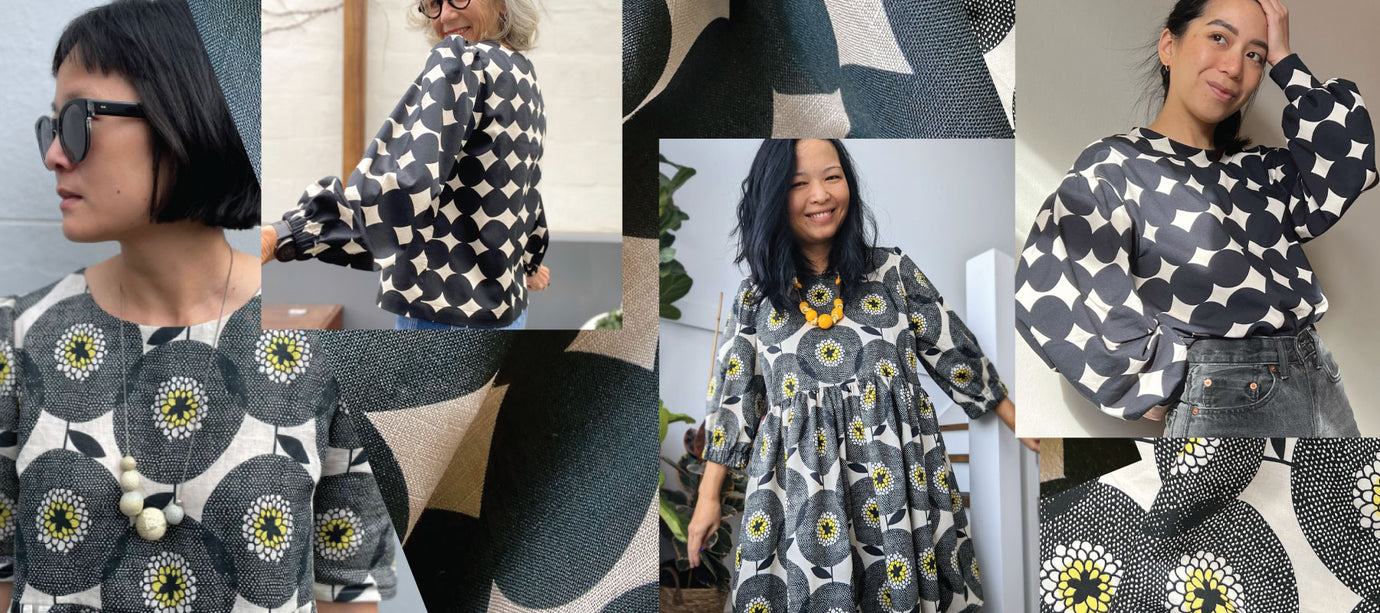Sewing: Quilting From Scraps

If you’ve got a bundle of beautiful Nerida Hansen Fabrics scraps leftover from your last sewing project, don’t throw them away! Xanthe Grundy of Wife-made will show you how to make a scrappy quilt with a modern twist with the simple Flying Geese quilt block.


What you need:
Nerida Hansen Fabrics scraps in similar colour palettes ranging in size from 3½" square to 7½" square. (The more scraps you have the bigger you can make your quilt!)
At least five fat quarters of solid fabrics that coordinate with your chosen Nerida Hansen fabrics. (The bigger you intend on making your quilt the more of each solid you will need.)
General sewing notions such as matching cotton thread, a rotary cutter, cutting mat, quilting ruler, washable sewing chalk or pencil.
Around Oz Planning template download to plan your scrappy Flying Geese quilt.
Fabric for the quilt back approximately 4" larger than your finished quilt top.
Quilt batting approximately 2" larger than your finished quilt top.

Around Oz Planning Template PDF download here
This tutorial shows two ways to make a Flying Geese block with a finished size of 3" x 6".
The first method is perfect for using up smaller fabric scraps ranging in size from 3½" square to 3½" x 6½". The second method is a no-waste method which allows you to make four Flying Geese at a time, and is perfect for larger pieces of fabric. Choose the method that suits the fabric scraps you have!
Method 1 - Individual Flying Geese block (Makes one block)
Cut two x 3½" squares (sky) and one 3½" x 6½" rectangle (goose).
On the wrong side of the squares draw a line from one corner to the opposite corner with a washable pencil.
Lay one of the squares on top of the rectangle, right sides together.
Sew along the drawn line. Press and trim to a ¼" seam allowance.
Open out and press.
Take the remaining 3½" square and repeat steps 3 to 5 on the other side of the rectangle.
See Figure 1.

Method 2 - No-waste Flying Geese block (Makes four blocks)
Cut four 4" squares (sky), 1 - 7½" square (goose)
Draw a line on the wrong side of the 4" squares from one corner to the opposite corner with a washable pencil.
Lay two sky squares on a 7½" goose square on opposite corners, right sides together, aligning the edges of the fabric and the drawn lines. Pin to hold.
Stitch to the left and right side of the drawn line using a scant ¼" seam. Press block to set seam.
Cut in half along drawn line to create two blocks. Press seams towards sky fabric.
Take the remaining two marked 4" squares and lay them over the top of the two previously completed units, right sides together, aligning corners and edges of fabric.
Stitch to the left and right side of the drawn line using a scant ¼" seam. Press unit flat to set seam.
Cut along the drawn line to create four Flying Geese. Press seams open towards sky fabric.
Trim each individual Flying Geese unit to 3½" x 6½", ensuring there is ¼" seam allowance allowed at the peak of the goose to the edge of the sky, as shown in red.
See Figure 2.

To piece your quilt top, lay your finished Flying Geese blocks out according to the layout on your Around Oz Quilt Planning template.
Piece each individual block together from top to bottom, using a ¼" seam allowance. Press seams to one side. Next, piece together each row from left using a ¼" seam allowance. Press seams open, and your quilt top is done! Finish your quilt by making a quilt sandwich. You can google this if you’re not sure what to do - there are lots of tutorials online. Baste it and quilt either by hand or with your machine.






